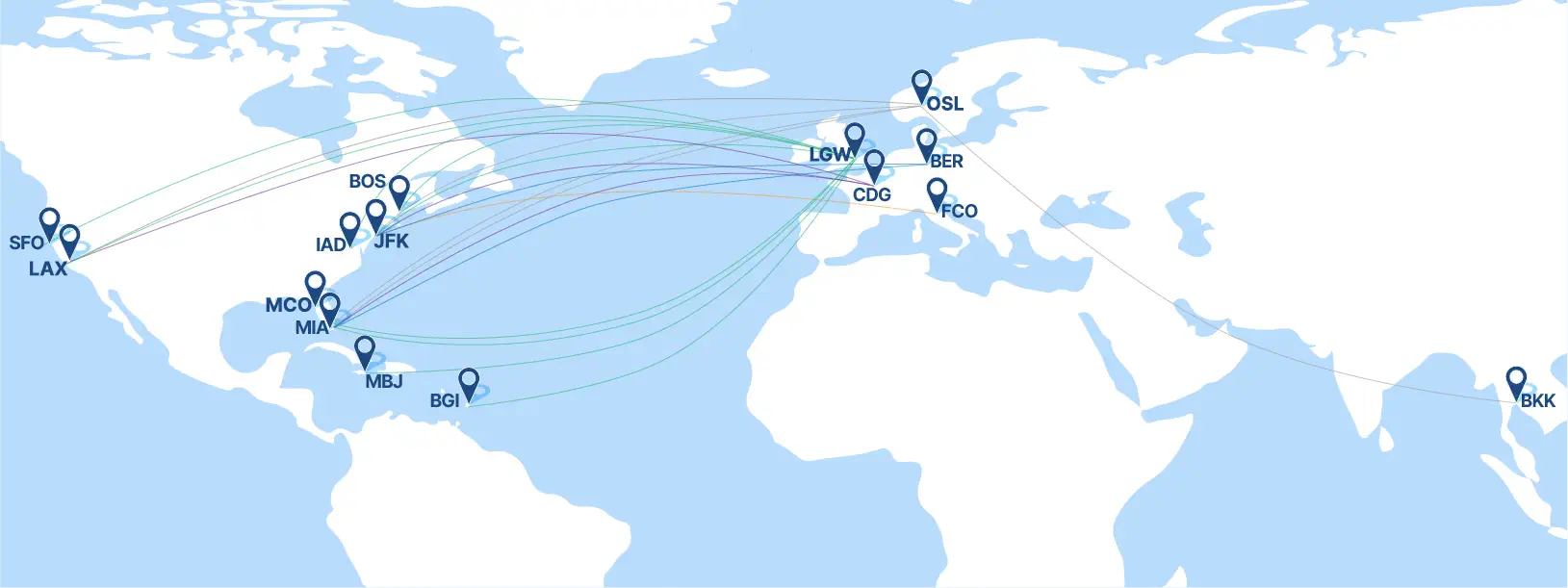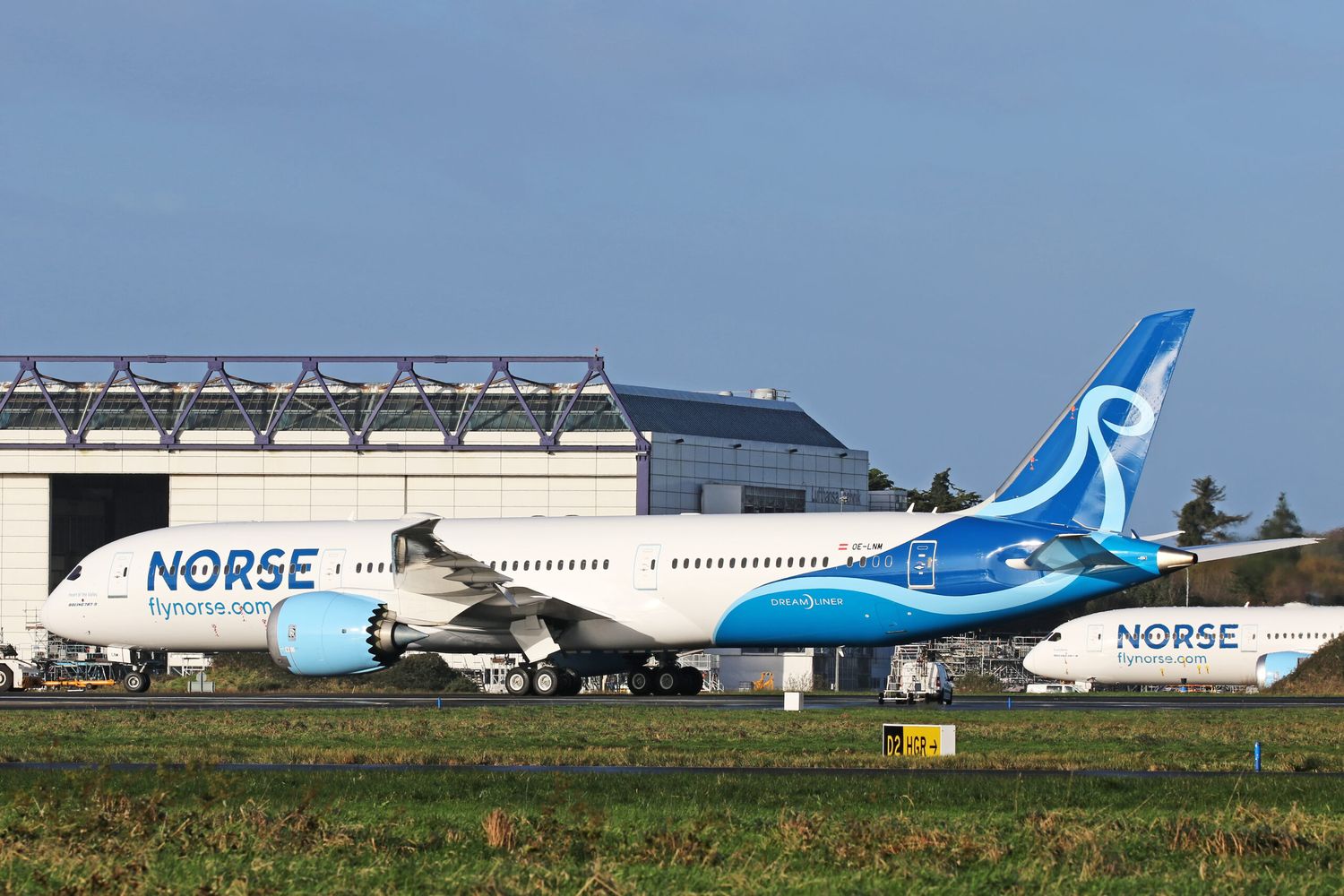Analysis: what Norse’s second quarter results tell us about the airline
Low-cost long-haul carrier Norse Atlantic announced last week its financial results for the second quarter of 2023. The airline reported a net loss of USD35 million over revenues of USD100.1 million, a negative margin of -34.9%.
This quarter is representative as it has been the first since the airline started its Summer ramp-up. The Fornebu-based company has started operations in June 2022, so this is its first peak season, when Transatlantic travel — its core operation — is at its highest levels of demand.
The ramp-up, according to report published by the airline, included five new routes, connecting London (Gatwick) to Fort Lauderdale, Los Angeles, Orlando and Washington, as well as Rome — a new base for Norse — to New York (JFK).
Norse Atlantic carried 204,564 passengers in the second quarter, at an average fare of USD335. With an average ancillary revenue of USD87, revenue per passenger reached USD422.
In the quarter, Norse flew 270,738 seats in 812 flights. Load factors in the period amounted to 75.5%. (Data of seats was not reported, but was extracted from Cirium’s Diio Mi application).

Norse’s net operating cash flow in the second quarter was negative at USD4.672 million. With the ramp-up of bookings as the Summer season progresses, «net cash flow from operating activities» was positive, at USD18.996 million.
According to the report, «net increase in free cash and cash equivalents», net of investing and financing, stood at USD6.983 million — the airline’s first quarter with this figure in the positive side, albeit pushed by a share issue.
Other important sources of revenue were cargo (USD4.152 million, «net of commission and other direct costs»), income from five Boeing 787s that are subleased to Air Europa (USD8.358 million), charter operations (USD0.514 million), the rest being reported as «other» (USD0.808 million).
Critically for the airline, Norse claimed that June, the last month in the second quarter, was already profitable.
Can Norse keep this momentum going?
Norse’s story revolves around a years-long, heated debate on whether the low-cost, long-haul business model can work. Perhaps the most popular case in this segment also came from Norway; Norwegian Air Shuttle started operating long-haul flights in 2013. Already before the pandemic, the airline was struggling with this growth, and with its COVID-19 restructuring, it shut down the long-haul operation completely.
The shareholders at Norse Atlantic, of course, believe this model can make money, provided that it stays focused on cost. In a further offering completed during the quarter, the airline raised NOK150 million, elevating its cash position to USD59.07 million at the end of the period.
«Q3 is expected to be our first financial quarter generating a profit», stated Bjørn Tore Larsen, Norse’s CEO and largest shareholder. «The move to profitability is driven primarily by having all 15 aircraft generating revenue for the first time, from 1st July, 10 of which are operating for Norse and five generating revenue through sublease income».
«By providing affordable air fares on competitive and established routes to key primary airports and destinations, we allow more people to explore the world and enjoy the experience of long-haul travel whether for leisure or business. Norse will be the first truly low-cost profitable long-haul airline», the executive added.
Norse is clearly developing towards a better position as its name gets known and the Summer season progresses. In the Transatlantic market but also in Europe, Summer season historically yields the best results for an airline, and it is critical that the company builds a strong standing in this period of the year.
With the fleet now set at 15 (10 of which are dedicated to its own operations), it seems that Norse has achieved the critical mass to at least break even in the Summer. Further, by email, a spokesperson stated that the airline plans «to reintroduce the five 787s currently leased out in a staggered timeframe», although not providing specific timings for that.
Generally, for a low-cost airline to succeed, high volumes are preferrable; that is, it is necessary that the airline has a minimum number of aircraft providing a cost advantage through economies of scale, but also that the aircraft it operates have a high productivity.
That would reflect in lower unit costs, which would be passed on to consumers. These lower fares, in turn, would drive higher number passengers by stimulating demand.
This proposition, as has been discussed over time, is more difficult to achieve in long-haul operations, as fuel takes a larger proportion of costs and fleet utilization in the course of a day is limited (for example, an aircraft can only do a Oslo-Fort Lauderdale roundtrip a day, regardless of the turnaround time).
Still, the airline’s reported unit cost (CASK) in the second quarter stood at USD7.39 cents. Using Iceland’s PLAY Airlines’ (which operates a low-cost transatlantic hub) results as a comparison, its CASK in the same period was USD5.3 cents. When removing fuel from the figure (CASK ex-fuel), Norse’s unit cost was USD5.87 cents versus PLAY’s USD3.5 cents.
For now, Norse Atlantic’s main concern going forward may well be its Winter performance. In this half of the year, demand for transatlantic travel collapses, demanding a higher deal of price stimulation.
As an illustration of that, Norse’s average fare in the first quarter (which should be taken cautiosly, as one can say the airline was still scaling up and getting known the market), for instance, was at USD171, with ancillaries amounting at USD52 dollars. This is significantly lower than in the second quarter, despite the shorter stage length in the former (5,006km versus 6,316km). And even then, load factors stood at 54%.
It is with this in mind that, for the upcoming Winter season, Norse Atlantic launched routes aiming at European tourists wishing to fly to long-haul destinations other than the United States. These are Bangkok, Barbados, Montego Bay; locations Norse’s spokesperson described as «Winter Sun destinations».
Finally, Norse has upscaled its sales efforts by increasing connectivity and sales channels. Over the past year, it started appearing in major online travel agencies. It also partnered with Dohop, a platform that allows it to connect with other airline partners at a lower cost. In Europe, easyJet and Norwegian help feeding Norse, in the U.S. Spirit does it, and in Thailand, the spokesperson said Thai Vietjet is the most recent addition to this partnership portfolio.
While going forward Summer may be almost a certainty for positive numbers at Norse (if the costs are kept at bay and demand does not decrease as it did during COVID), the priority to the airline now is definitely minimizing losses during Winter.


Para comentar, debés estar registradoPor favor, iniciá sesión